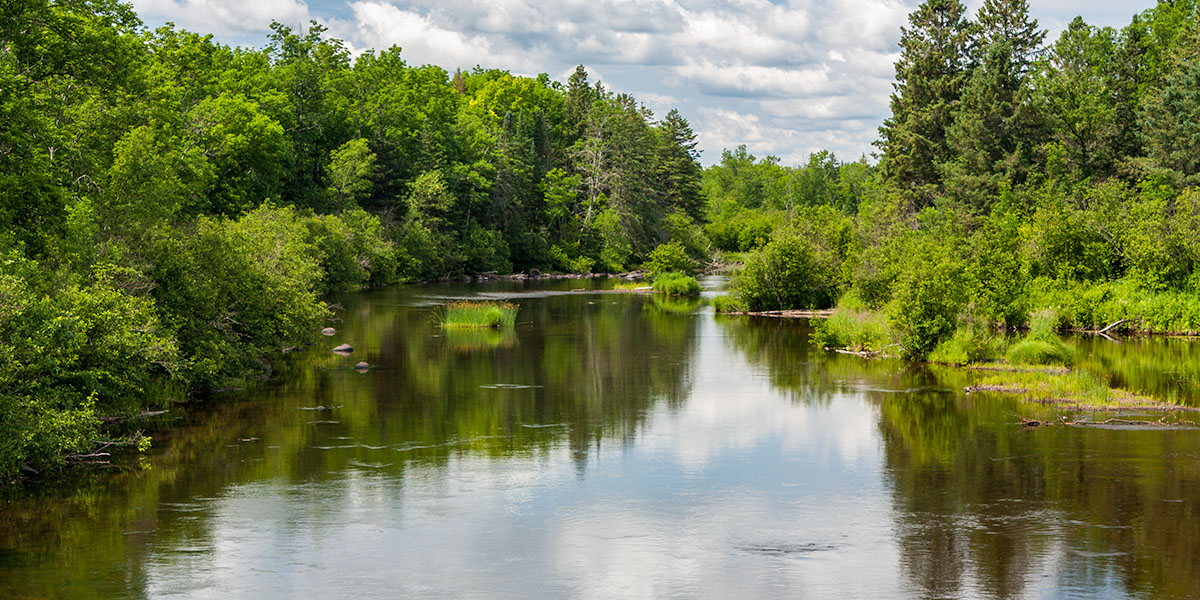The St Croix River throughout most of this segment continues to be narrow, flowing through a scenic and wild landscape. Open marsh and alder thickets often border the river in the first mile or so, providing excellent opportunities for bird watching. Dense forest closes in near Big Fish Trap Rapids, and continues to closely surround the river to Riverside Landing. The St Croix noticeably widens after the Namekagon River confluence.
Most of this section is flatwater. However, one of the most challenging rapids on the St Croix are at Big Fish Trap Rapids, a difficult class II located about a mile and a half below Dry Landing. After Big Fish Trap, paddlers will find sporadic, shallow and rocky riffles and low-hazard rapids all the way down to Riverside.
Canoe campers may hear wolves and/or coyotes howling and yapping late at night. Other night-time sounds include the distinct calls of whip-or-wills and a symphony of crickets during the early evening hours. Camping along the river is a fun experience and is highly recommended!
River Camping
The National Park Service has three individual and five group campsites in this segment. Individual sites accommodate up to three tents and/or eight people, while the group sites hold up to six tents and/or sixteen people. There are no fees for accessing, camping, or parking in any of the National Scenic Riverway areas. There is a three night limit of stay. All sites are on a first-come, first-served basis. Glass beverage containers are not allowed on the riverway!
Season
Above the CCC Bridge, the best paddling is usually in May and June, thereafter following an extended rainfall from July through September. Below the CCC Bridge, the river is generally navigable throughout the warm-weather season.
River Level Information
Current Conditions: St Croix National Scenic Riverway
Phone: NPS Namekagon Visitor Center, 715.635.8346
River Safety
You are responsible for your own safety.
Know your paddling abilities and limitations as well as the abilities and limitations of everyone in your group. It is good parctice to scout all rapids and all potential hazards.
Please read the Paddling Safety page before you paddle.
